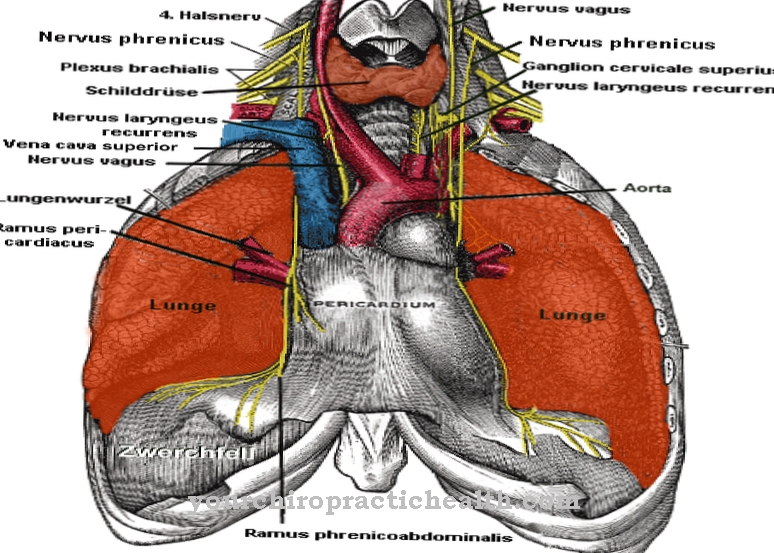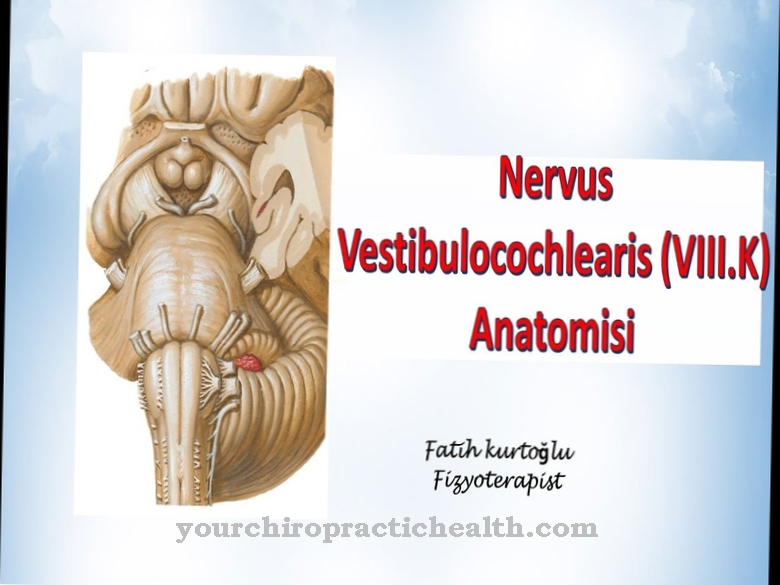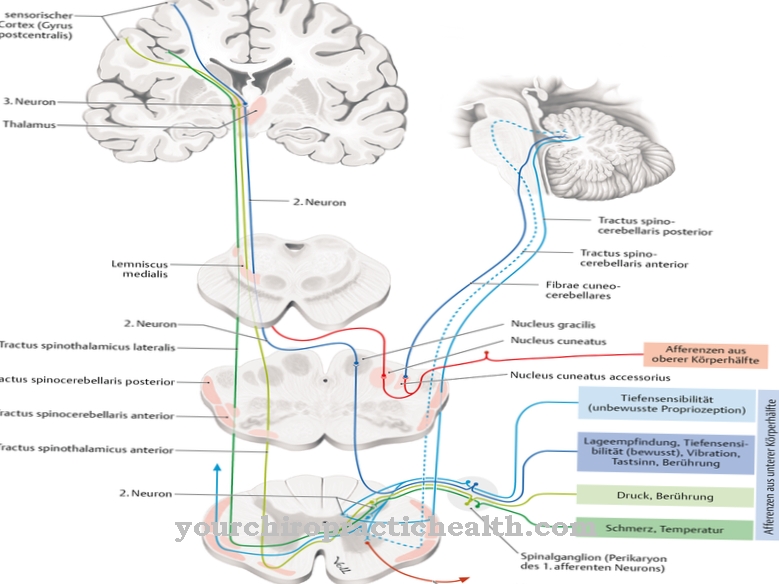The protein Tropomyosin occurs primarily in the striated muscles and participates in muscle contraction. Genetic mutations can affect the structure of the tropomyosin molecules produced and thereby cause a number of diseases - including various forms of cardiomyopathy, as well as arthrogryposis multiplex congenita and nemalin myopathy.
What is tropomyosin?
Tropomyosin is a protein found in the human body primarily in the skeletal muscles. The biochemist Kenneth Bailey first described the protein in 1946. A single muscle consists of many muscle fiber bundles, which in turn consist of the muscle fibers.
Each fiber is not composed of a single, clearly defined muscle cell, but of a tissue with many cell nuclei. Within these units, the myofibrils represent finer fibers; their transverse sections are called sarcomeres. A sarcomere is made up of two types of strands that are alternately pushed into one another, like a gear or zipper. Some of these strands are myosin, the others are a complex of actin and tropomyosin. In this complex actin molecules form a thick chain around which two strands of tropomyosin are wound.
Anatomy & structure
Tropomyosin consists of two parts: α and β. The two building blocks have a total of 568 amino acids, of which 284 are α-tropomyosin and 284 are β-tropomyosin. These amino acids line up in a row and form long chains before finally joining together to form a rod-shaped macromolecule.
The sequence of the amino acids and the structure of the protein are genetically determined; in humans, the following genes are responsible for this: TPM1 on the 15th chromosome, TPM2 on the 9th chromosome, TPM3 on the first chromosome and TMP4 on the 19th chromosome. The strand of tropomyosin (with both subunits) winds around the thicker actin filaments in the striated skeletal muscles. Troponin, another protein, is also attached to it.
Function & tasks
Tropomyosin is required for skeletal muscle to contract. When a nerve impulse reaches the muscle, the electrical stimulus initially spreads through the sarcolemma and the T-tubules and finally leads to the release of calcium ions in the sarcoplasmic reticulum.
The ions bind temporarily to the troponin, which is located on the tropomyosin strand. As a result, the calcium ions change the physical properties of the molecule. The troponin shifts slightly on the surface and thus moves away from the places to which myosin can also bind. Myosin forms the complementary fibers to the actin / tropomyosin complex. At the end of the myosin filament there are two so-called heads. The myosin heads can bind to the areas of the actin filament that are no longer occupied by troponin.
After they have docked on the fiber, the myosin heads fold over and push themselves between the actin / tropomyosin filaments, which shortens the sarcomere. At the same time, this process happens not just in one sarcomere, but in many. The numerous contracted sarcomeres therefore cause the muscle fiber and thus the muscle as a whole to contract. A nerve signal often stimulates several hundred muscle fibers. The plasticizing effect of adenosine triphosphate (ATP) enables the myosin head to detach itself from the actin.
The contraction of the smooth muscles is somewhat different. Smooth muscles surround organs in humans or are found in the walls of blood vessels. It can contract more than striated muscles. While the skeletal muscles have a striated structure, the smooth muscles form a flat surface made up of individual cells. In addition to actin and tropomyosin, the smooth muscles have caldesmon and calmodulin, two other proteins, the interaction of which influences the tension in the muscles. Tropomyosin acts primarily on calmodulin.
In addition, tropomyosin also plays a role in other biological processes. For example, it seems to influence the binding of actin in the cytoskeleton and to have an effect on cell division.
Diseases
One disease that may be related to tropomyosin is hypertrophic cardiomyopathy. This is a heart disease in which the sarcomeres (sections of the muscle fibers) are thickened, which also affects the thickness of the muscle fibers as a whole.
As a result, symptoms such as a sensation of pressure in the chest, dizziness, shortness of breath, syncope, and attacks of angina may develop. In this case, they go back to functional problems of the heart muscle. The most common cause (40–60%) of hypertrophic cardiomyopathy lies in the genes: changes (mutations) lead to errors in the genetic code and, accordingly, to the incorrect synthesis of proteins. This can also affect the various proteins that make up muscle fibers.
In restrictive cardiomyopathy, the heart muscle becomes hardened. The cause is an excess of connective tissue. Restrictive cardiomyopathy leads to heart failure, which is typically characterized by breathing disorders, edema, dry cough, fatigue, exhaustion, dizziness, syncope, palpitations, and various indigestion. Those affected are less likely to be confused, suffer from memory problems or impaired cognitive performance. Dilated cardiomyopathy can also be due to an error in the tropomyosin genes.
When this heart disease manifests, it is often associated with global heart failure and / or progressive left heart failure. In addition, breathing disorders, embolisms and cardiac arrhythmias can appear. Two other diseases that can be related to tropomyosin and are partly based on mutations are nemalin myopathy, in which the muscles can be impaired in many ways, and arthrogryposis multiplex congenita, in which the joints stiffen. However, all of these diseases can also have other causes; mutations in the tropomyosin genes are only one possibility.
























.jpg)



